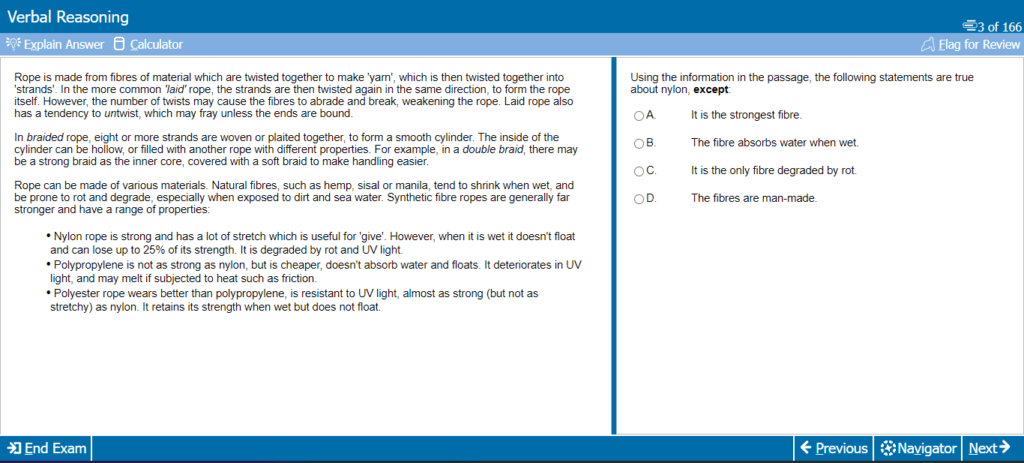If you are considering taking up one of the medical and dental degree programs in countries such as the United Kingdom, Australia, and New Zealand, it would be best to know everything about UCAT or the University Clinical Aptitude Test (UCAT), which is an admission test.
Is the UCAT difficult? You may have the same question in mind. Most of the takers find the test difficult to pass. That’s why you need all the necessary information and preparation to increase your chance of passing the exam. In this article, you may find these helpful guidelines.
 What to Expect in the UCAT Exam?
What to Expect in the UCAT Exam?
Medicine and Dentistry are among the most in-demand medical courses in the United Kingdom. To take up medicine or dentistry, you must pass the UCAT exam, get high grades from high school, and pass the interview. A UCAT exam is an admission test necessary to ensure the credibility of the students.
Its original name is UKCAT because it is primarily used in the United Kingdom. However, as years passed by, countries like Australia and New Zealand also began to use it. Because of this, UCAT becomes the new name.
The UCAT exam is a computer-based exam composed of various questions determining your mental abilities. Therefore, it is not an exam to assess your intelligence but measures your ability to particular skills or knowledge necessary in medicine and dentistry.
The test will determine your numerical skills, communication skills, problem-solving skills, and values such as integrity and empathy that you must finish within two hours. It has five parts in multiple-choice questions: situational judgment, abstract reasoning, verbal reasoning, quantitative reasoning, and decision making.
How many questions in a UCAT test? You need to answer a total of 225 questions. After the exam, you can immediately get your result.
How Hard is it to Pass the UCAT?
How hard is the UCAT exam? This question is very common for those who want to become a doctor.
According to the previous takers, UCAT is a very challenging test. It requires enormous preparation and stringent guidance and practice. Some even said the needed preparation might be three years or more to get your target score.
Constant practice is necessary to enhance your speed since you must finish answering all the 225 questions in only two hours. Moreover, most of the questions are unfamiliar and difficult. That’s why many students did not complete the exam.
Thus, it is a time-pressured exam that demands quick analysis. You cannot afford to fail it because you are only given one opportunity per year.
What’s the Most Challenging Part of the UCAT Exam?
Undoubtedly, UCAT is a difficult exam. The first thing you need to overcome is the time pressure. You must finish the test within two hours. You may not have enough time to review your answers. Aside from that, note that you need to be higher than the other test-takers. That’s not easy because most students are also intelligent and very determined. Thus, it would be best if you competed with them.
According to those who experience taking up the UCAT exam, they find the verbal reasoning section the most challenging part. If you are not a fast reader, you may keep reading the statement until you understand it and come up with the final answer. As a result, you will spend more time in this section and neglect to answer the other sections. Abstract reasoning is the next because it may be difficult for you to determine the correct patterns.
How Long Does it Take to Prepare for UCAT?
If you want to be a medical student, you must prepare ahead of time. Since high school grades are essential in the admission requirements, you must stay focused and aim for high grades during your secondary years.
Because UCAT does not measure your academic knowledge or intelligence, it may be challenging for you to know where to start and what specific topics to study. There is no particular book or guide to read and memorize.
A duration of six weeks before the exam may be enough for you to study and prepare. Spending two hours answering the UCAT practice test or about 15-20 hours per week is recommended. During the two hours practice test, you should be serious and focused. Avoid doing other activities such as using your mobile phone.
By constantly answering the UCAT practice test, you will be able to enhance your speed, reading, and quick-thinking ability. You will also get familiarized and used to the different types of questions, which will help you develop strategies and a systematic approach to answering the exam.
How to Ace the UCAT Exam?
One of the challenges you will face before starting your medical or dentistry course is that you must pass the UCAT exam, which is obviously difficult. However, this does not mean that you will stop trying because, with the proper preparation, practice, and application, you will be able to make it. You may find the guide below useful.
Know the type of test and how you will be scored. The exam has five sections: verbal reasoning, decision making, quantitative reasoning, abstract reasoning, and situational judgment. These five sections are explained in detail below:
Verbal Reasoning
These are 44 questions that will determine how good you are at analyzing the information given to you. You will decide what’s the best conclusion you can make based on the passage provided to you. It can be a short statement in which you will answer with TRUE or FALSE.
Below is an example of a verbal reasoning question:
Based on the sample question, it is a long passage which is why you should know the do’s and dont’s when answering the verbal reasoning, which is listed below:
- Practice reading and comprehending fast. As you can see, some questions contain long passages. That’s why you need to read and understand it quickly to draw the right conclusion.
- Read each text carefully and watch for keywords and tricky words such as dispersion or juxtaposition in the passage.
- Read the question first, then proceed to the passage to help you save more time.
- Look for contradictory or mitigating words.
Decision Making
This is the second part of the test, composed of 29 questions. This section tests your logic before you make the decision, evaluate information or argument, solve problems, and analyze. The answer format comes in a yes/no conclusion.
Decision-making comes in different types of questions, such as the following:
- Logical puzzle
- Venn Diagrams
- Probabilistic Reasoning
- Syllogism
- Interpreting information
- Recognizing Assumptions
When you answer the decision-making questions, make sure to familiarize yourself with the terms that may serve as keywords, such as “some,” “none,” and “all.” It is also vital that you don’t make any assumptions. Your answer or conclusion should be based on the passage given to you. Avoid overanalyzing the question.
When you answer the logical puzzle, strictly follow the instructions to solve the problem because these questions are about the position of a person or object concerning another. When you answer the Venn diagram and mathematical equations, it would be best if you had a whiteboard, pen, and paper with you. Instead of putting all the information, you can use abbreviations on your whiteboard to work out your answer, which will help you save more time.
Quantitative Reasoning
This part has 36 questions to determine your numerical, data analysis, and data application skills by interpreting graphs, tables, and charts. In this part, you may encounter elimination questions, statement questions, and the “can’t tell in QR (quantitative reasoning)” questions. Usually, the QR questions are considered trap questions. Make sure to spend only one minute per question to save your time.
In elimination questions, you must learn how to eliminate possible wrong answers to narrow down to get a higher chance of selecting the correct answer. Using a whiteboard in this area is also helpful in keeping on track.
You must handle the statements from how easy they are to investigate in the statement questions. If you encounter many questions like calculations or statements always look for shortcuts.
The “can’t tell in QR” questions usually contain inadequate information, so it is difficult to determine the correct answer.
Abstract Reasoning
You must answer 55 abstract reasoning questions in this section in 30 minutes. When answering the abstract reasoning questions, it would be best if you knew the four question types.
Type 1 has two sets of shapes with set A and set B. In type 2, there are several shapes, and you need to determine the sequence so you can answer the next shape. Type 3 or referred to as the analogy question, has a statement with several shapes. Type 4 re best-fit questions, which are a variety of type 1 questions.
You can use the SCAN method in answering this part of the test. SCAN stands for:
Shape
Look at the shape in the box and figure out what type of shape is there. Check if the shapes are similar or different from one another. Look at the shapes for curves and straight edges. Are all shapes regular in size? Are the shapes concave or convex?
Color
When you look at the shapes, you also look at the color if all of them are shaded or which part is unshaded. Observe if the shape has consistent color or if the box has a specific number of colors.
Arrangement
Look at the position, arrangement, and orientation of the shapes in the box. Are there arrows? Also, observe if the shapes are rotated or overlapping each other.
Number
How many shapes are there? Are the shapes in odd or even numbers? How many angles are there?
The scan method may help you answer the abstract reasoning within your time limit.
Situational Judgment
Situational judgment is scored from band 1 to band 4, band 1 being the best and band four being the worst. You must aim for a band 1 or 2 to get a good score.
Again, it is necessary to determine the type of questions you will encounter in this subtest.
The first type is the appropriateness question that assesses how appropriate suggested actions are by one of the characters in the scenario.
The second type of question is the important question. These questions assess each factor’s importance by looking into how the character should respond in the scenario.
Avoid overthinking and not rely on your instinct when you answer the situational judgment.
The four sections will be scored between 300 and 900. However, situational judgment is scored in a band between 1 and 4. You must not get a score below 610 in the test’s four sections. For situational judgment, you must get band one or band two scores.
Wrapping Things Up: How Hard is the UCAT Exam?
How hard is the UCAT exam is? Indeed, it is a challenging test. You can’t miss your chance because you will need to wait one year before you can do the retake again. That’s why you need to give your best during the exam.
It is essential to determine the five subtests of the exam such as verbal reasoning, decision-making, quantitative reasoning, abstract reasoning, and situational judgment.
Each subtest has corresponding questions and time limitations that you must strictly follow. To save time, you can use your whiteboard to keep on track, have your pen and paper with you, and stay conscious of your consumed and remaining time.
Lastly, before the exam, learn the different questions under each subtest. In this way, you will measure your capability to pass the UCAT. You can practice online and put a time limit while practicing.

 What to Expect in the UCAT Exam?
What to Expect in the UCAT Exam?






